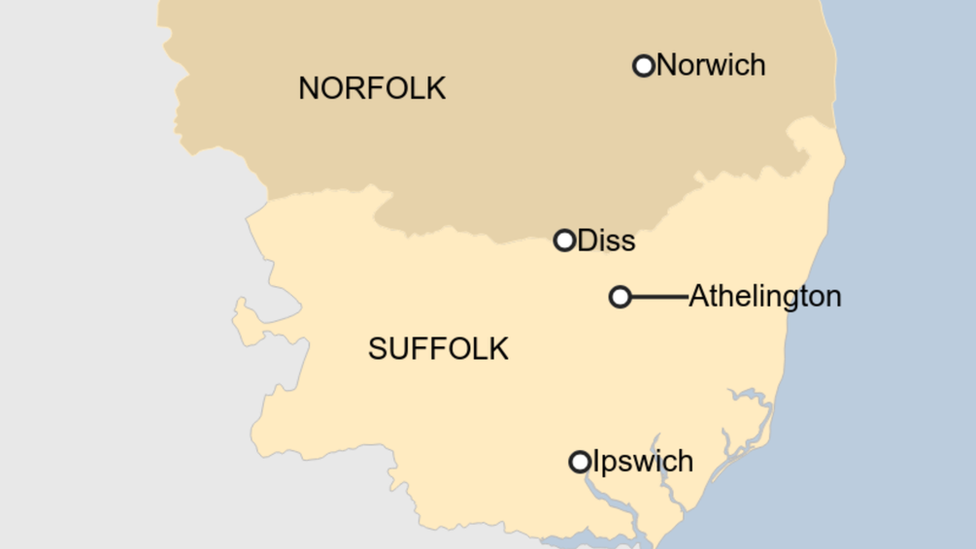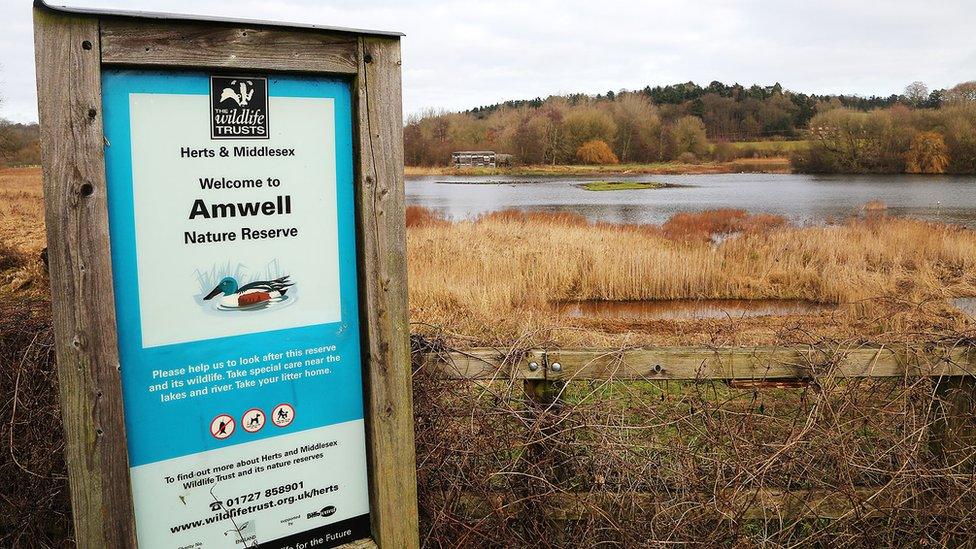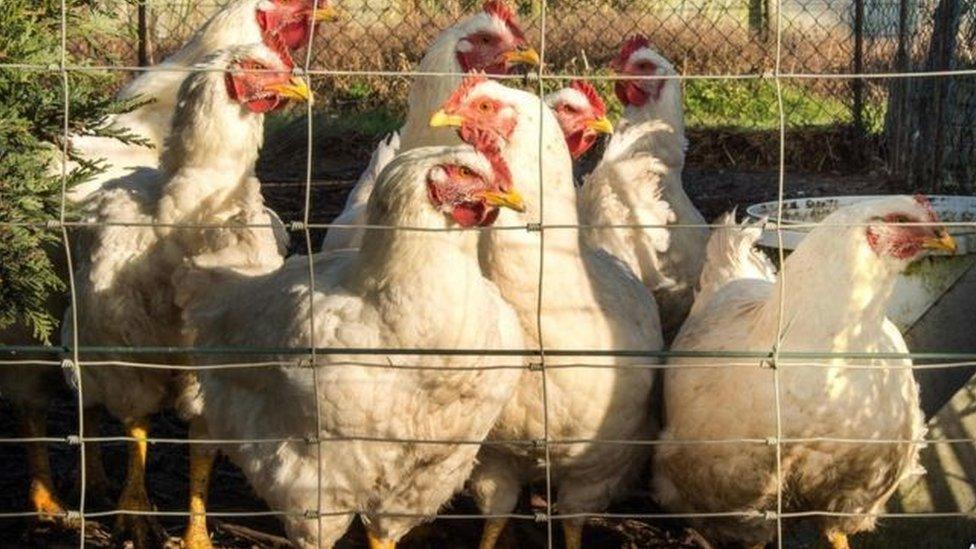Suffolk bird flu: Cull of 27,000 chickens completed
- Published

Some of the chickens were found to have a strain of avian flu
A cull of 27,000 chickens has been completed after cases of bird flu were detected at a poultry farm.
The H5 strain of avian flu was found at the farm in Suffolk, and a 1km (0.6 mile) exclusion zone set up.
The premises near Eye are now being cleaned and disinfected by the Animal and Plant Health Agency.
Officials from the Department for Environment, Food and Rural Affairs (Defra) have found no evidence of bird flu at nearby farms.
An investigation is continuing to find the source of the outbreak and the risk of further spread.
Public Health England previously said the risk to the public was very low, while the Food Standards Agency said there was no food safety risk as long as poultry products were thoroughly cooked.

The outbreak was discovered at a farm in Athelington, near Eye in Suffolk
The strain at the commercial farm at Athelington, confirmed on 11 December, has been identified as "low pathogenic avian flu" (LPAI).
Highly pathogenic avian influenza (HPAI) is the more serious type of the disease which can prove fatal to birds.
LPAI is usually less serious but can cause mild breathing problems in poultry, Defra said.
The British Poultry Council said the Christmas turkey market was "unaffected" by the case.
In 2017, some 23,000 chickens were destroyed at Bridge Farm in Redgrave on the Suffolk/Norfolk border after the H5N8 avian influenza virus was found,
In June that year the same strain was identified in about 35 chickens and geese at a farm near Diss in Norfolk.
- Published11 December 2019

- Published15 June 2018

- Published5 February 2018

- Published24 January 2018

- Published22 January 2018

- Published18 January 2018
